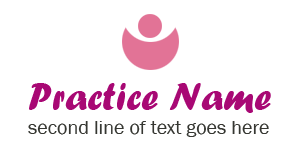I truly love my job. I work with a wide range of clients that vary from anyone learning the basics of the hand portion guide and applying that to habit change, as well as the high-level athlete who needs help fueling optimally around training and competition.
If you’ve been wondering if you could benefit from working with a nutritionist, my humble answer is “absolutely”. We may all be at different places in our health journey, but each individual could use tweaks or changes, and the occasional refocus in their diet. (I’m right there with you!)
We are constantly hearing of the success so-and-so had on x crash diet or feeling the need to turn back to the old diet that worked for us once upon a time, even though it’s like the bad ex-boyfriend that we know will give us results that won’t last, but for some reason, we keep going back.
So why waste your time with the old tricks? The miserable detoxes? Listening to the latest social media influencer who has a 6-pack so is obviously educated to give advice? Do you really think you will find the healthiest version of yourself at the end of those rainbows?
I want to emphasize how sometimes small steps can lead to faster and greater change.
Define what you are looking for
What does the change mean to you? Is it weight loss? Is it greater mental health, or joint longevity? Once your end goal is defined, only then should you pick a route to get there.
I don’t recommend starting some plan just because so-and-so also saw results with it. What were their results? Were those results the same as what you are looking for? Think about reasons why that plan may have worked for them, and why it may or may not work for you.
Crash diets and detoxes are so specific, which I think people crave; however, these specifics/ rules are the main reasons they aren’t sustainable, and ultimately why people fail to maintain their health following their termination.
I have so many clients who request a strict road map when they come in on day one. They say if you tell me exactly what to do, I will do it. But then weeks down the line life changes. And if I gave them a strict road map that doesn’t include “if this, then” statements, that makes it awfully hard for them to succeed.
As a nutritionist, I believe one of my key roles is to help my clients adapt along with their goals. I provide accountability, but also the ability to make adjustments in their habit change path as we go.
Building Blocks
Instead of giving my clients new habits after new habits to master every time we meet, sometimes a session calls for a tweak of the habit change in progress. Not every new change is a seamless transition into daily life.
I don’t focus necessarily on breaking “bad” or old habits, but rather building on the foundation that already exists. I aim to use your current routines to your advantage in the process of forming a new habit. By building a new behavior on top of a routine or habit that already existed, the prompt to do a new task is already there. I will help plan out personal ability, or the best way to get the task done from there.
I ask my clients: Is this an easy or a hard task for you to accomplish? If this is an easy task- then motivation doesn’t need to be too high to get it done. However, the harder the task, the more motivation, and commitment I know I need from my client.
For example, Bob wants to incorporate more cardio in his workout routine and tries to start running after work. The habit doesn’t stick because sometimes when he gets home it is too dark outside and cold this time of year, so he puts the habit off. Instead of putting the habit off, Bob just needs to strategize.
Firstly, he has the ability to exercise when he arrives home from work because he has time available. However, he does not always have the ability to run outside as he planned. So to most efficiently reach his goal, we also need to access his motivation and make an “if this, then” statement. Bob has been highly motivated to lose weight by his daughter’s wedding in July, so we need to return his focus back there.
My statement for Bob would be “If I arrive home from work too late to run outside, I will then complete an indoor cardiovascular workout of at least 30 minutes to hit my daily goal.”
The strategizing I just used is based on Dr. BJ Fogg’s Behavior Model, and if you are interested in learning more, you can check it out here. The model has truly helped me and my clients predict potential road bumps, create useful “if this, then” statements, and adapt as we turn tasks into successful habits.
What’s the first step?
So if I’ve got you really contemplating small steps versus a big detox or fad diet, what is the first of these small steps? Well, as I said earlier, it depends on what you are looking for. Pick your end goal. Then work backward, filling in with the building blocks in between.
If you want help designing personal building blocks for you, please reach out to me. I would love to meet with you, in person or virtually. If you aren’t quite ready for a consultation, call the office and I would be more than happy to answer any questions you may have.
I do hope my passion for helping my clients create lasting changes is evident here. I would love to help you too.


